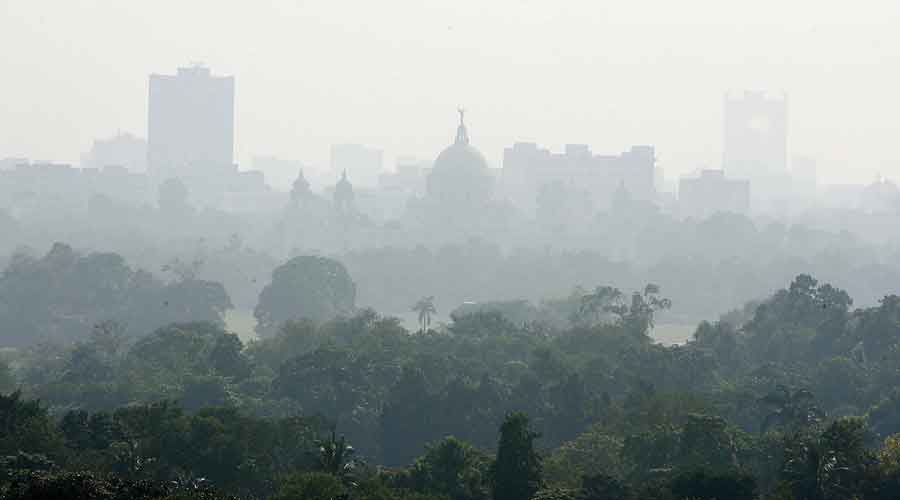The city’s air quality index soared well above 400, deemed severe, on Diwali midnight.
The air pollution at Diwali midnight in the residential part of Kolkata was almost double the value compared with the previous midnight, showing the impact of burnt fireworks.
The night before Diwali, the air quality in the city was “poor”, two grades less harmful than “severe”.
Severe air quality affects healthy people and seriously impacts those with existing diseases, said doctors.
According to Central Pollution Control Board data, the average air quality index (AQI) value at five stations in and around the city’s residential zone was 441 at Diwali midnight.
The AQI was the highest - 500 — at the station on the Rabindra Bharati University campus on BT Road on the northern fringes of Kolkata, followed by Bidhannagar (452), Jadavpur (443), Rabindra Sarobar (409) and Ballygunge (402).
In contrast, on November 4 midnight, the AQI at the Rabindra Bharati station was 331. The value at the others varied between 161 and 306.
The various categories of air are good (with AQI varying between 0 and 50), satisfactory (51-100), moderate (101-200), poor (201-300), very poor (301- 400) and severe (401-500).
The stations at Fort William and Victoria Memorial recorded less rise in AQI compared with the other stations in the city. Experts explained the difference citing the fact that the two stations are located away from residential areas.
The CPCB data shows that all stations recorded a high volume of PM 2.5, the most toxic of all air pollutants that can enter the deepest crevices of the lungs and trigger a range of diseases, including fatal ones.
“Comparative data shows the role of fireworks as other sources, particularly transport, contribute far less to air pollution on Diwali. Moreover, the dominance of PM 2.5 underlines the role of fireworks,” said Siddhartha Datta, retired pro-vice-chancellor of Jadavpur University and an environment expert.
“High levels of pollution impact Covid patients and also those who have recovered from the disease,” said Arup Haldar, a pulmonologist who has been treating Covid patients.
